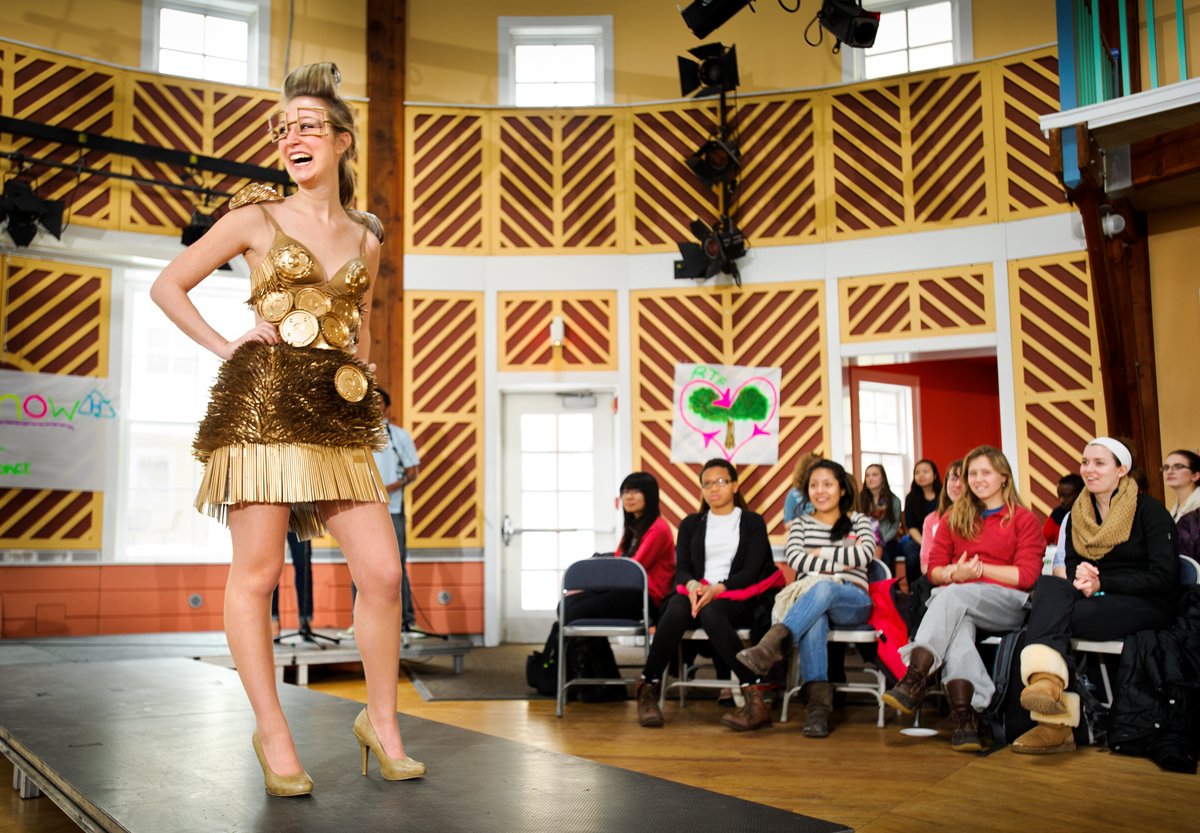
Clothing constructed of everything from banana peels and straws to garbage bags and recyclable bottles hit the runway as the Recycling Task Force hosted Hamilton’s first “Trashion Show” on March 3. The show was part of Recyclemania, an eight-week program that encourages student to reevaluate their waste and improve recycling.
The idea for the Trashion Show was proposed by Hamilton Environmental Action Group (HEAG) president Nora Boylan ’15. Eight campus groups put together trash in an effort to create the most fashionable outfit possible. Among groups that submitted ensembles were the Asian Cultural Society, Tumbling After, Gamma Xi and ATX.
The competition was fierce and fabulous and everyone enjoyed delicious refreshments of opus chai and hot chocolate. Stickers with the logo “Get Trashed” from atayne.com promoted recycled clothes. The outfits that were submitted were creative and well put together. One notable construction was made solely of banana peels to promote them as composting materials, and another, from Tumbling After, was constructed of old sheet music.
First place went to Emily Anderson’13, whose design modeled by Annie Phillips ’13 was a dashing gold number made out of lids and straws. The piece had texture and took a new and fresh look at the way that dresses are constructed - making the whole thing a complete item instead of focusing simply on just recycling or just fashion.
Second place went to ATX’s entry, McKenzie Foster ’14, who wore a piece named “Bananas Foster” to describe her dress made entirely of banana peels.
The Trashion Show’s judging was based on four criteria. First was style, and whether or not the ensemble was visually appealing. The winners of the show all had a very streamlined look to them; form fitting with details in the skirts and backs, and even embellishment such as a cape.
The second category was for originality. The judges were looking for creativity in the usage of the materials, and the originality of the design. Third was use of materials, such as how the paper had been put together: if it had been duct taped, that would have gotten lower points because duct tape is not recyclable. And if the piece had been strung together with bits of plastic bag, then it would have received higher points.
Finally, the last criterion was form and function. The judges looked to each outfit to see how well it was constructed, how well it stayed together and moved with the model on the runway. The model should not have to accommodate the piece; the piece should accommodate the model.
The judges included Dean of Students Nancy Thompson, Arboretum Director Terri Hawkridge, and a few students.
Posted March 6, 2013
